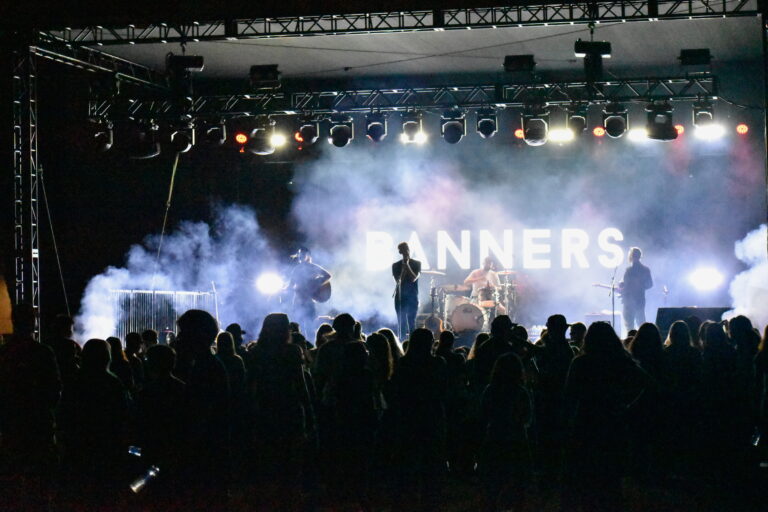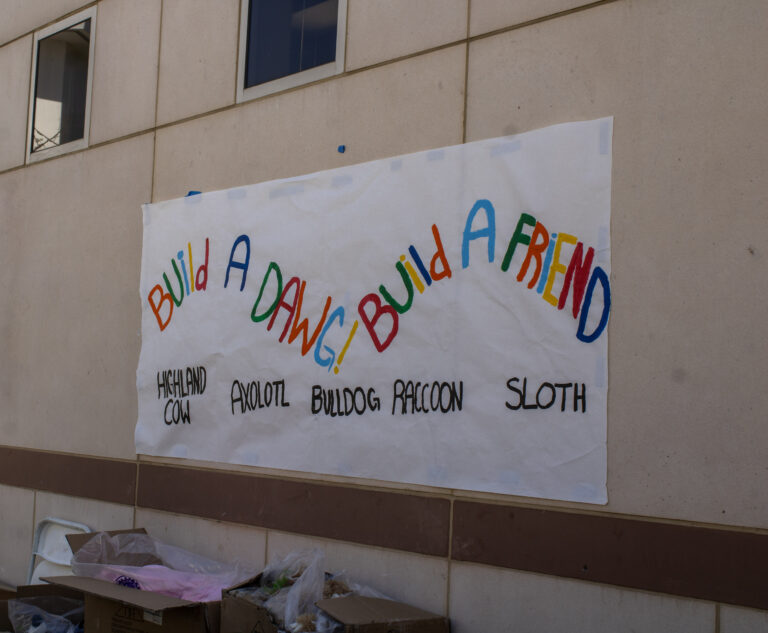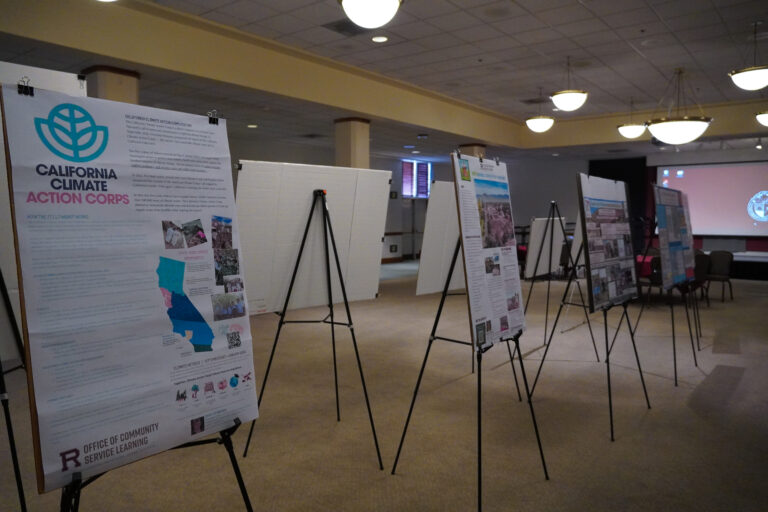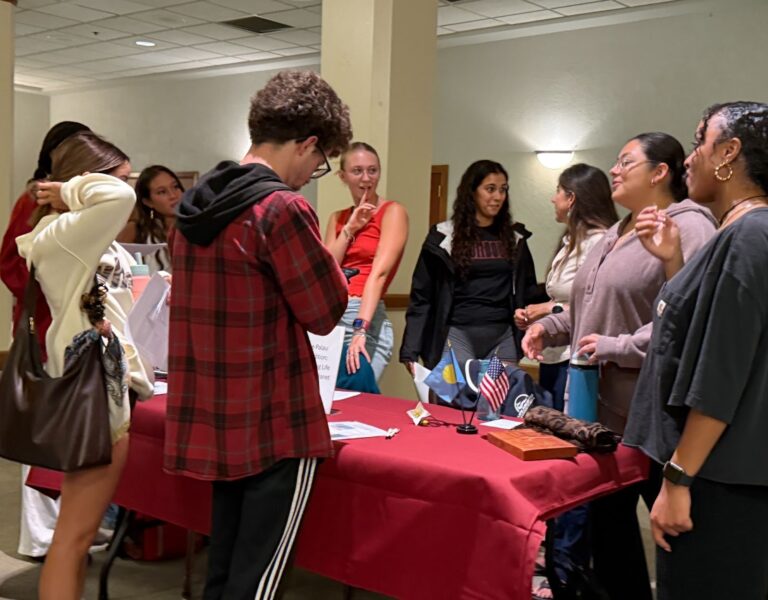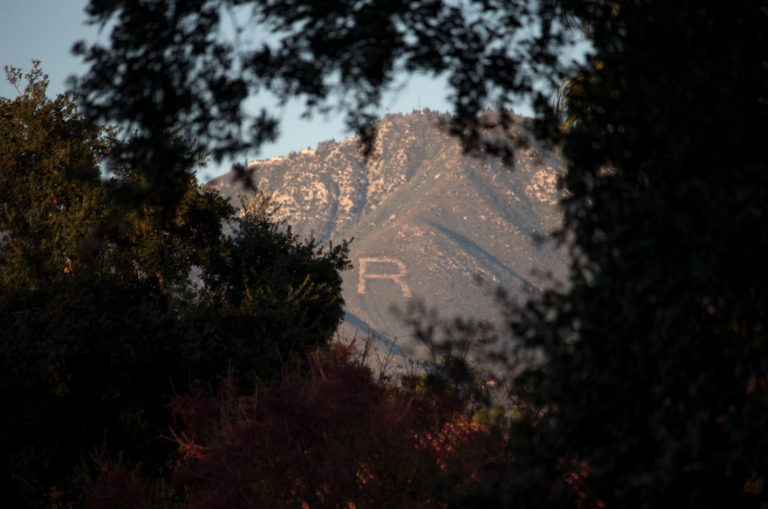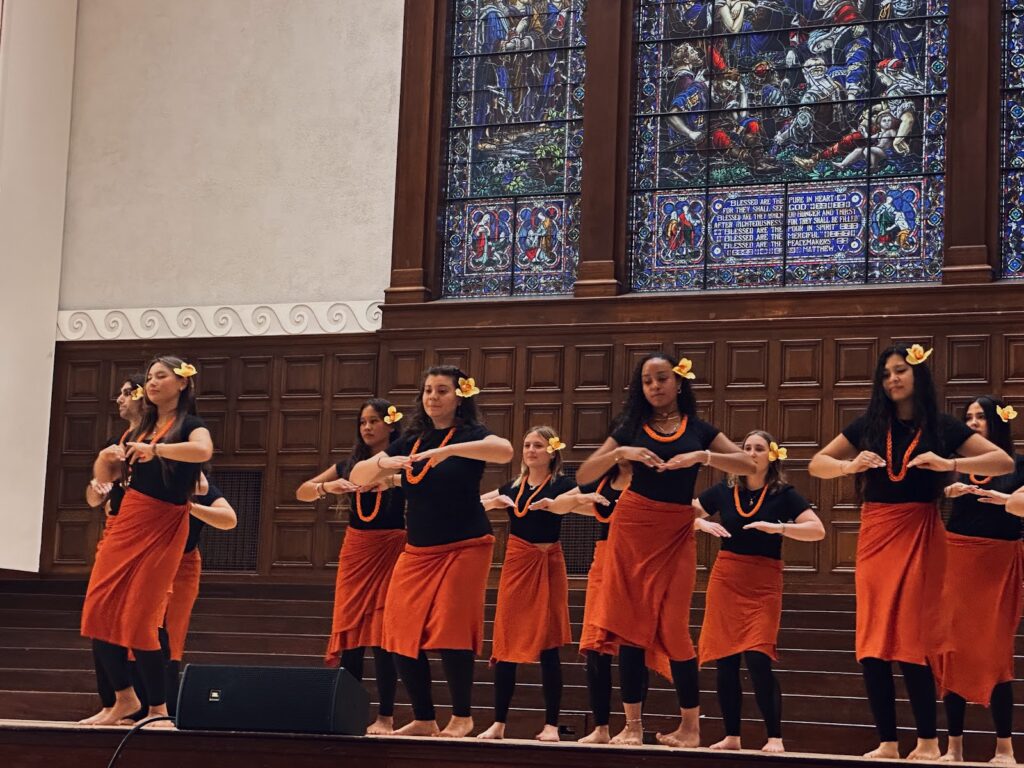
Dressed in traditional Pacific Islander wear, Elaine Talamaivao crossed Memorial Chapel’s center stage with a determined gait and warm smile to set the tone for the April 10 Our Collective Ancestral Voices event.
“Always remember where you come from,” she said.
Talamaivao taught the Pacific Island Dance (DNCE 260) class that presented this production. It lasted from 5-7 p.m. on April 10, with the first hour dedicated to food and socializing in the space between the Memorial Chapel and Fine Arts building. DNCE 260 students served traditional Pacific Island dishes of spam musubi, kalua pork, katsu chicken and watermelon otai from Ono Hawaiian BBQ.
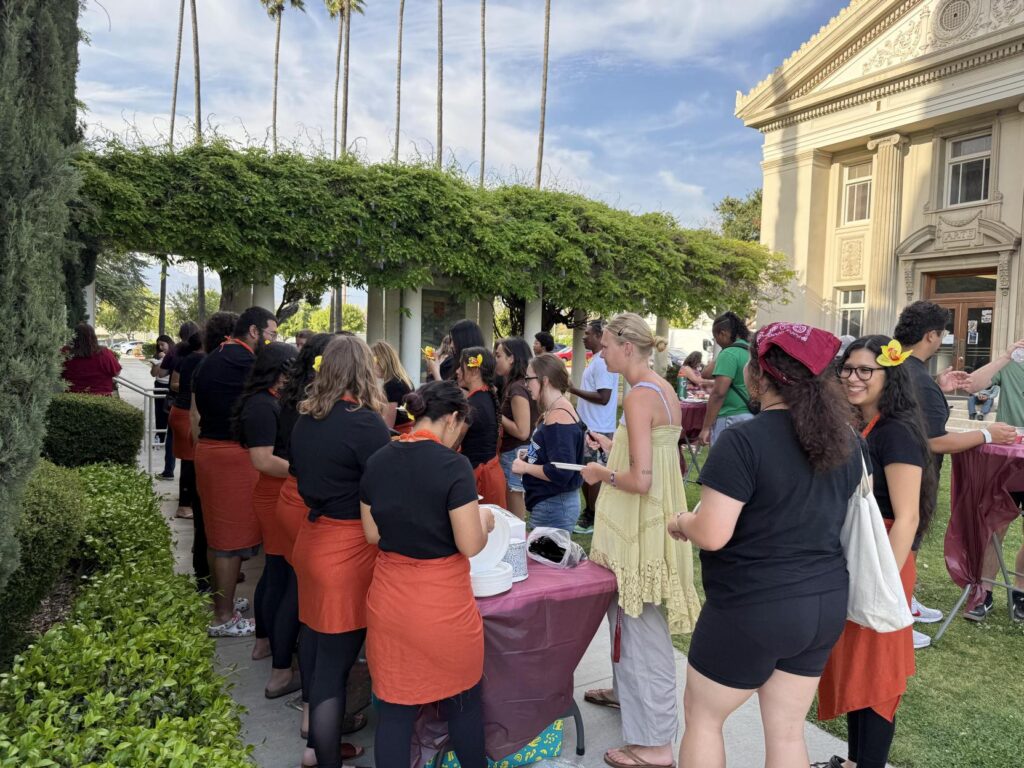
Photo Credit: Karalee Vaughn, University of Redlands assistant director of Native Student Programs, Retention
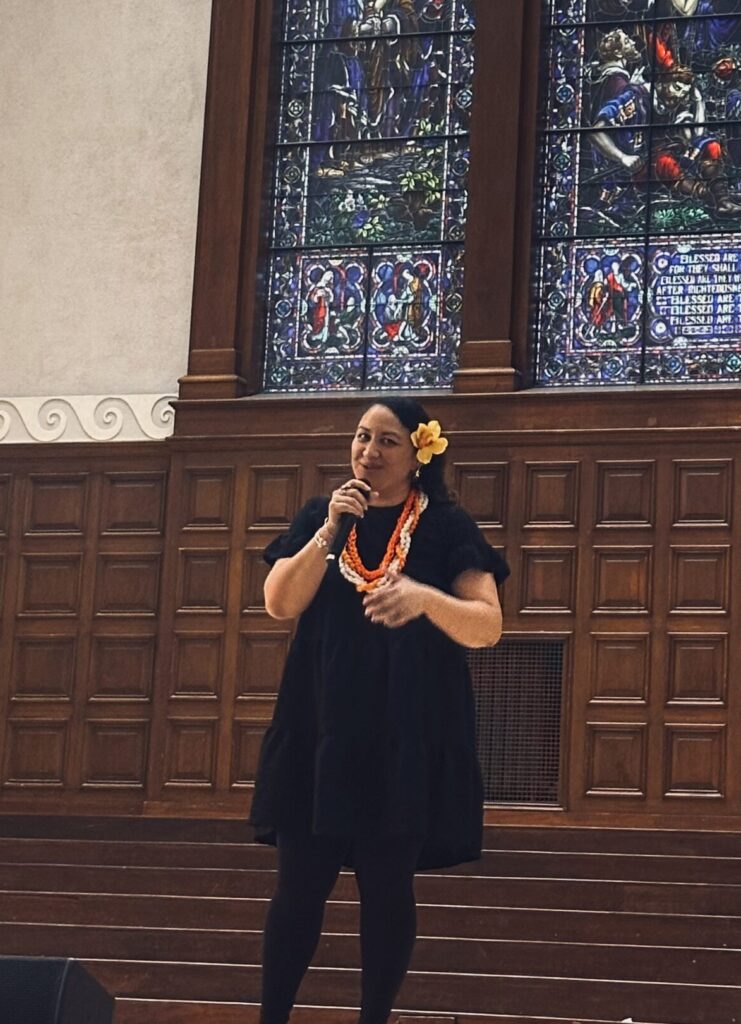
Photo Credit: Kiera Beyer
Marcus Miller, an acclaimed drummer based out of LA, kicked off the second portion of the evening with handpan drumming as people made their way into Memorial Chapel for a series of performances.
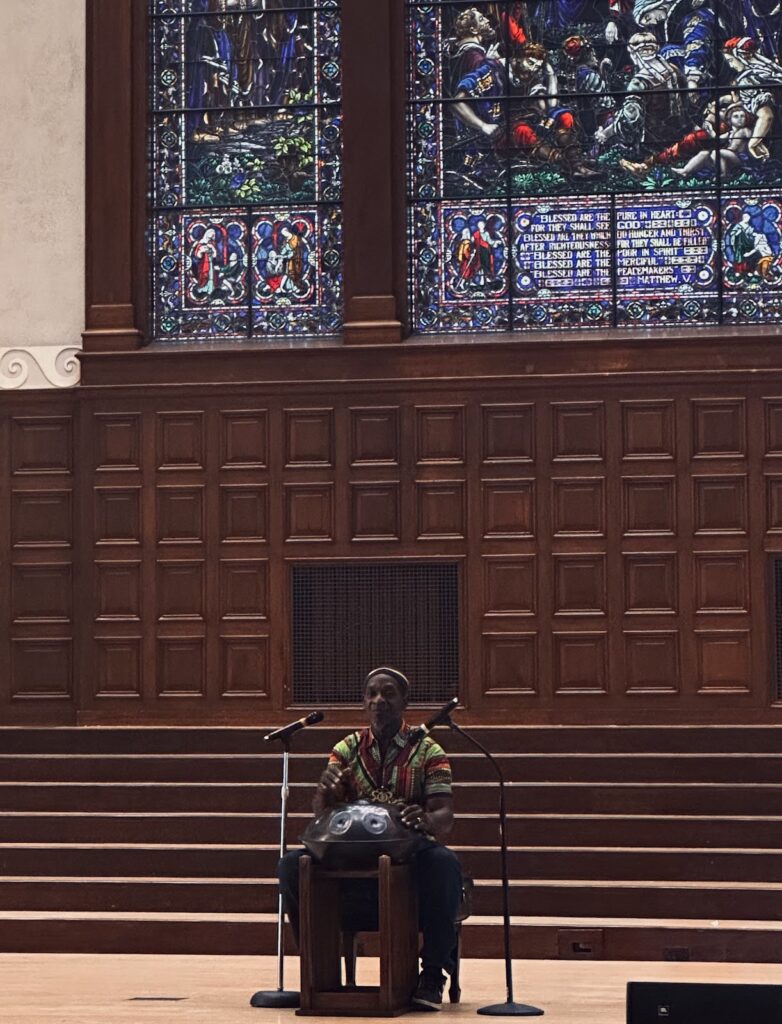
Photo Credit: Kiera Beyer
Pepehas, traditional Māori introductions that connect individuals to their earthen surroundings, were interspersed throughout the production by four DNCE 260 groups of earth, wind, fire and water. When it came their turn, each group would introduce themselves by their native surroundings: maunga (mountain), awa (body of water), iwi (tribe, or family), hapū (subtribe, such as Greek life or team), and ingoa (name). Introductions through such a macro- to micro- fashion, Talamaivao said, reminds people that they’re part of a bigger picture.
“In our culture, we don’t introduce ourselves first,” she said. “We introduce where we come from and our families first, so it makes it more of a collective introduction rather than just yourself.”
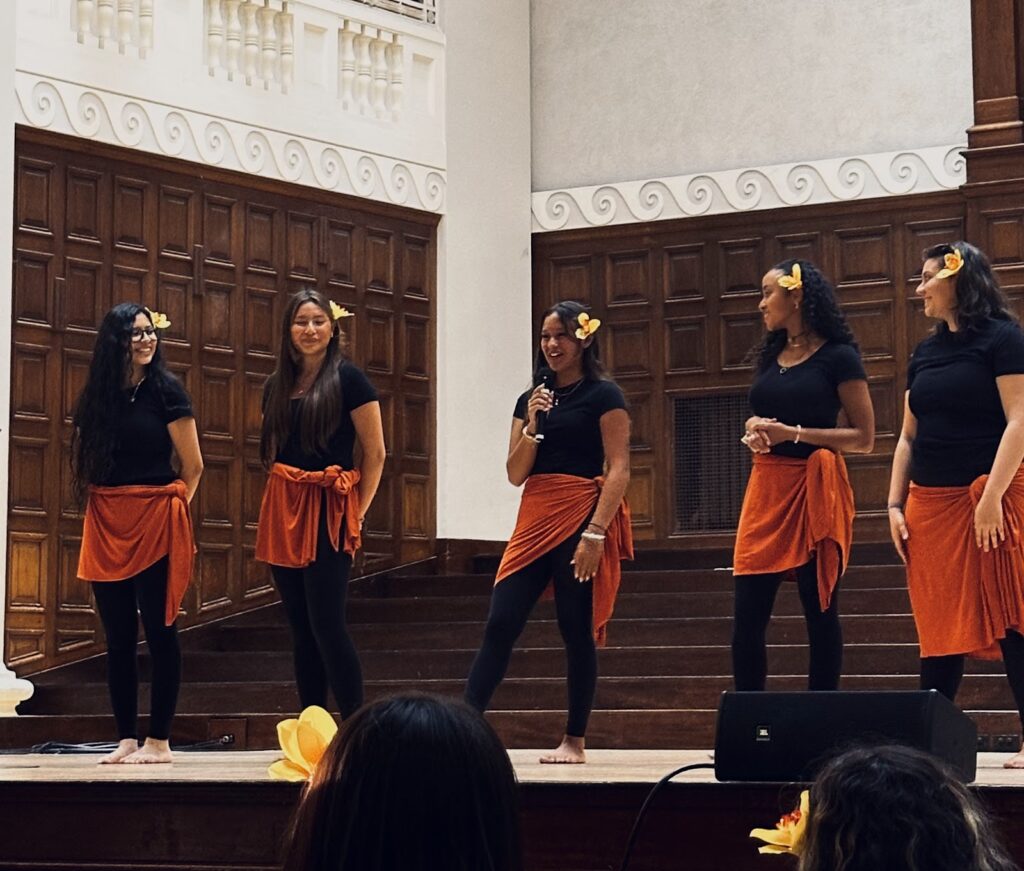
Photo Credit: Kiera Beyer
The students showcased traditional New Zealand, Hawaiian and Tahitian performances. First was the Māori Haka which, Talamaivao explained, is a ceremonial performance used to express collective pride and strength. In accordance with Māori customs, this Haka was followed by a song. Students sang Tōku reo, which translates to “My language.” Talamaivao said this song went viral about two years prior because of conflicts related to the Te Tiriti o Waitangi (Treaty of Waitangi), the founding agreement signed in 1840 between Māori chiefs and the British Crown. As Talamaivao explained, protests arose when New Zealand’s Prime Minister attempted to diminish Māori access to healthcare and education, as well as remove the Māori language from being taught in schools. Tōku reo expresses the importance of resistance and individualism jeopardized by such actions.
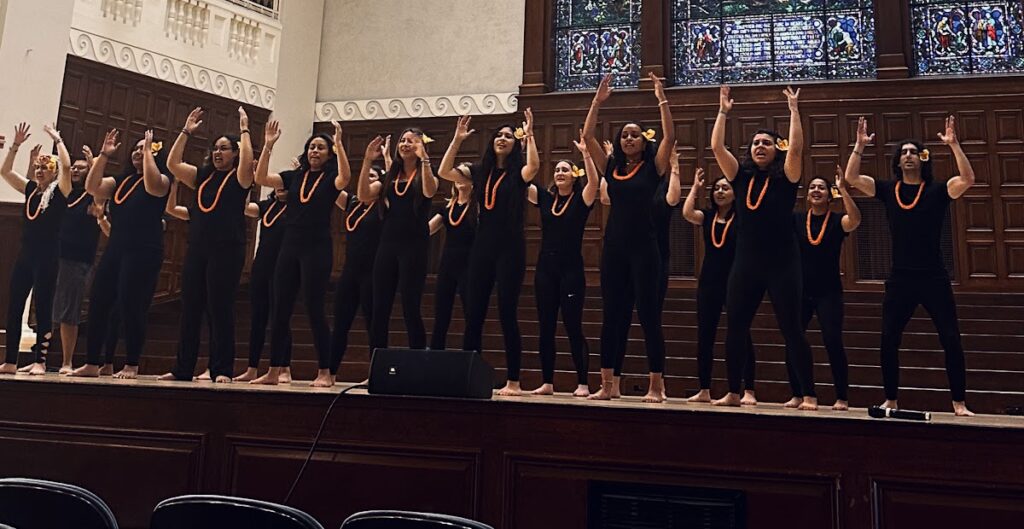
Photo Credit: Kiera Beyer
“It doesn’t matter where you go,” Talamaivao said. “You will always find your voice to be yours and your breath to be yours. That is your connection back to your homeland.”
DNCE 260 then transitioned to the Hawaiian portion of the night, with Hula Kahiko and Hula ‘Auana. The Hula Kahiko honors King David Kalakaua for his revival of the hula during the missionary colonization of Hawaii, while the Hula ‘Auana represents natural elements in a more modern style.
Attendees got to try their own hand – and hips – at Hawaiian hulas as the DNCE 260 students invited them onto the stage to learn three moves: the sideways stepping Kaholo, the forward and backward stepping Hele and the Ami hip swivel. Smiles and laughter abounded during this segment, as the individuals enjoyed partaking in the Hawaiian ‘hang loose’ style.
Such involvement and enthusiasm, DNCE 260 student Robert Hernandez ‘29 said, was his highlight of the evening.
“We really thought that [the crowd] was going to be quiet, just observing, like how usual performances go,” He said, “But no! Everyone in the crowd was so into it and really enjoying it.”
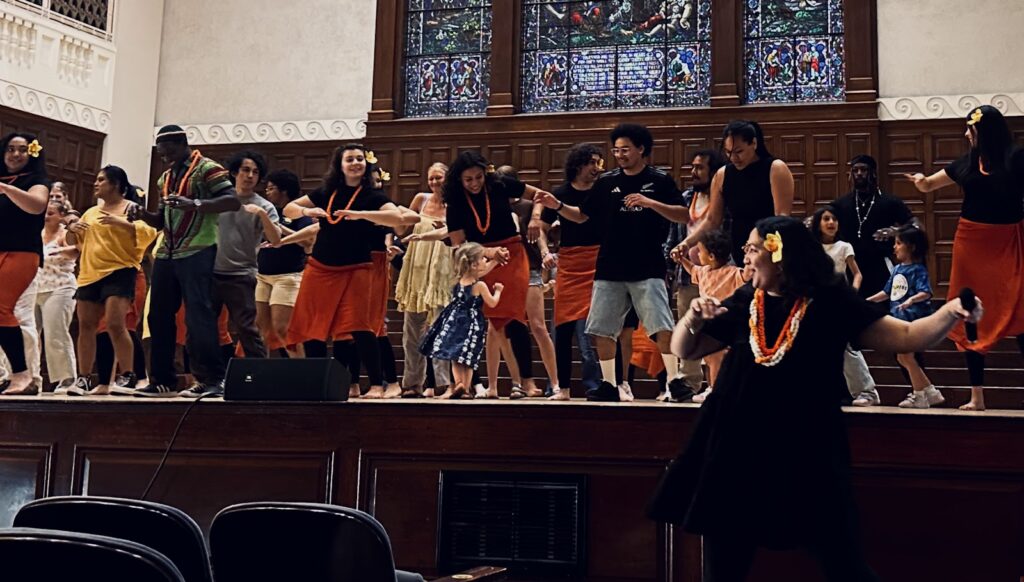
After the audience members returned to their seats, Ji Dooley ‘26 presented a poem he wrote about identity. Talamaivao said she asked Dooley to participate in this event because of the close bond they had developed – having met during the Summer Bridge program of Dooley’s freshman year – and his spoken word talents. They first collaborated for the 2024 Junteenth celebration, where Dooley performed a dance and spoken word. When Talamaivao began planning for Our Collective Ancestral Voices, she knew she wanted to invite Dooley again.
“I wanted him to have a place on that stage to share who he was,” Talamaivao said. “Part of that intentionality, too, was to really have him, and students like him, stand in their full glory and talk proudly about who they are, where they come from.”
Dooley rhythmically delivered his powerful poem, two segments of which are included below.
________________________________________________________
My identity: separated by different aspects of my life
My identity: Pulling me Left and Right
My identity: Triggering Fight or Flight
My identity: distinguishing black from white
MY Identity is Priceless
It can never be remade, replaced, or recreated
It can only be remembered
But it starts with giving me a choice
________________________________________________________
Following Dooley’s poem, DNCE 260 students transitioned to the Tahitian portion of the program with the fast-paced Tahitian ‘Ōte’a.
“After Haka, which is really intense, after Hula, which is really grounding and soft, everyone loved the Tahaitian,” Talamaivao said.
Following the Tahaitian ‘Ōte’a, several individuals showcased their heritage, starting with the incoming Asian Student Association President Chi Luu ‘26 playing a Vietnamese Dan Nguyet.
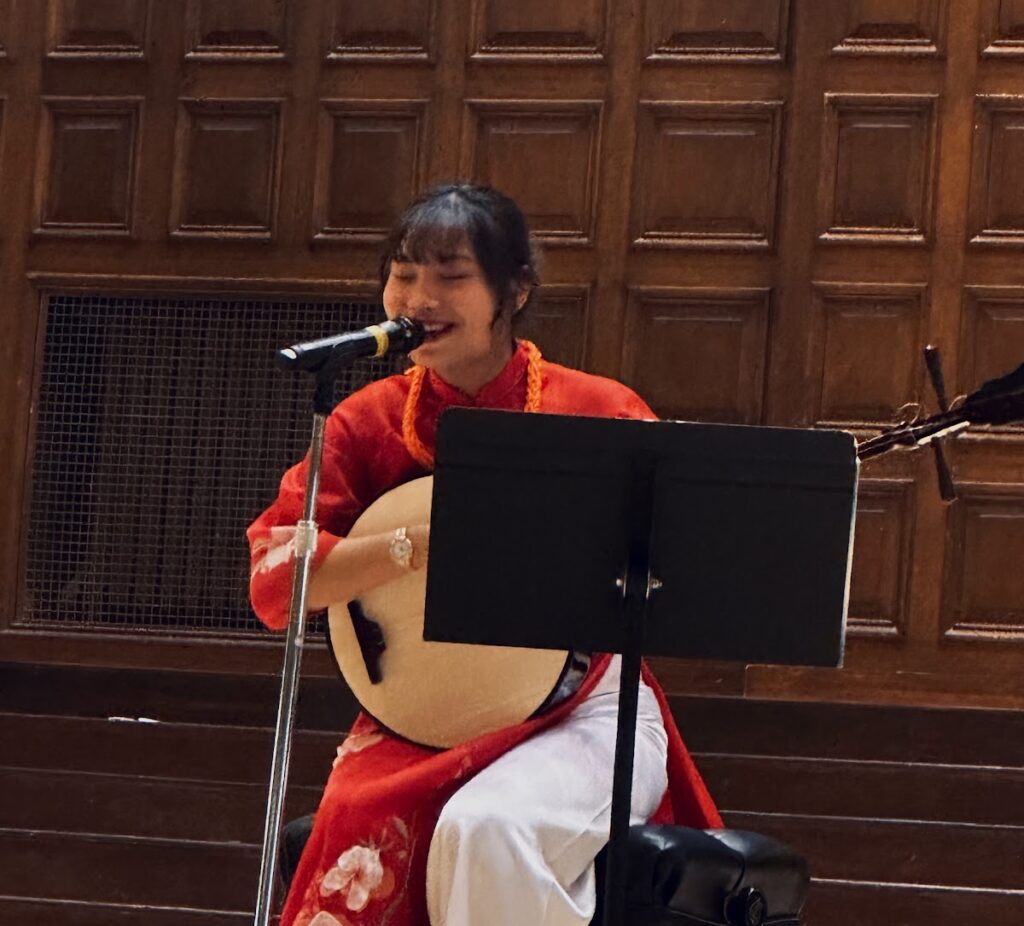
Photo Credit: Kiera Beyer
Next was the PVR President Elenoa Fifita ‘26 and her boyfriend Tevita Mo’ui he Ofa Feaomoeata ‘26 interpreting the meaning of a supplemental song through movements as part of a Tongan Tau’olunga. This was followed by a traditional Tongan song with guitar accompaniment by Tevita Mo’ui he Ofa Feaomoeata.
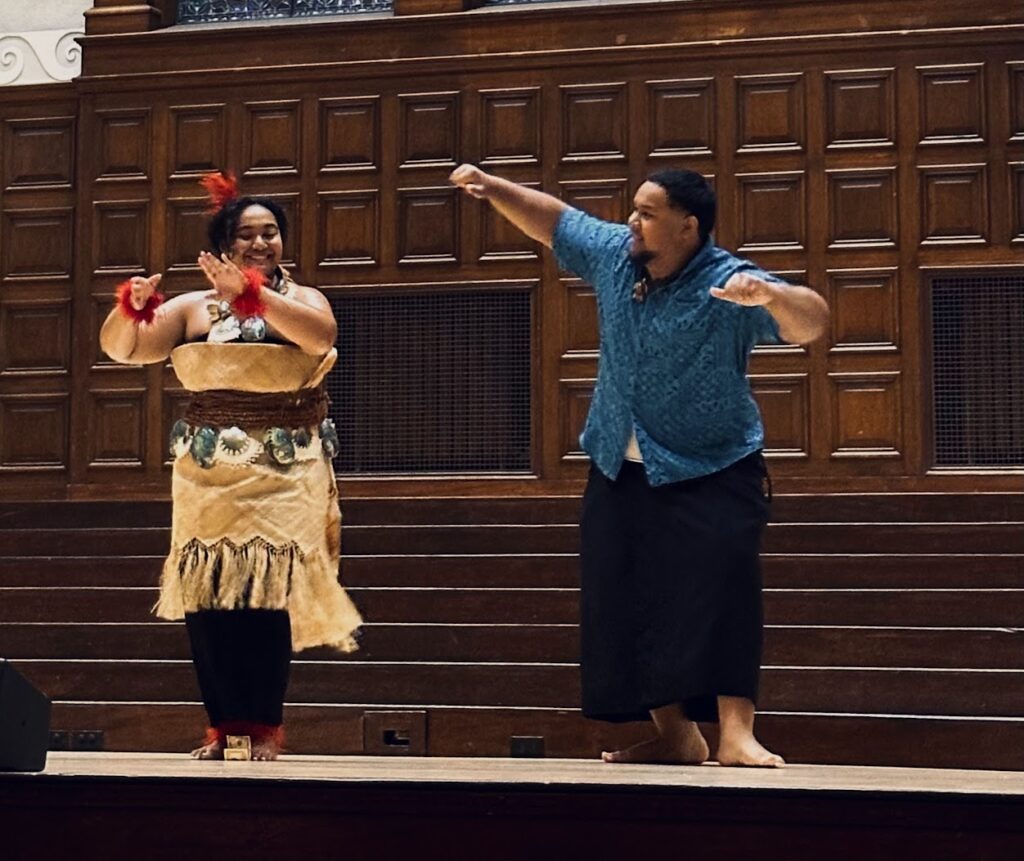
Photo Credit: Kiera Beyer
The last performance of the night, the sacred Samoan Tau’olunga, was given by Talamaivao. This was done to honor the Talamaivao family, which Talamaivao said is renowned for its strong ties to traditional Samoan customs and leadership. The Tau’olunga is typically performed by the taupou (chief’s daughter) or manaia (chief’s son) and signals the end of performances.
The Our Collective Ancestral Voices event concluded the same way each DNCE 260 class ended, with a ‘close-out dance circle.’ One by one, students danced their way across the circle to exchange with another student until everyone had had the chance to have some fun. This dance circle, Talamaivao said, was her favorite part of the evening.
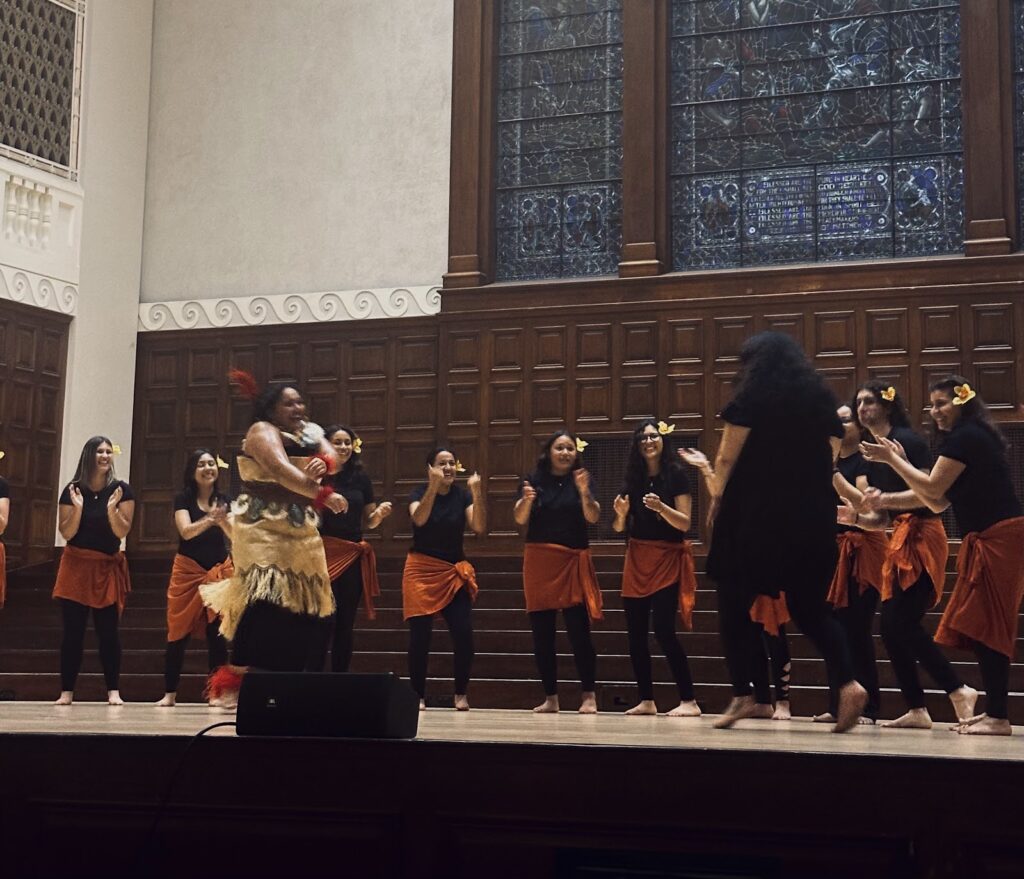
Photo Credit: Kiera Beyer
“You got to see them just let go. You got to see them just dance and be goofy and be them,” Talamaivao said. “I think that will be a memorable moment for all of them.”
Talamaivao wanted to thank their community partners for helping make this evening possible: Redlands Student Government, Office of Inclusion and Community, PVR, Native Student Programs, Instructional Technology Systems and Admissions. She said this production exceeded her expectations, and for the 33 years that she has been putting on cultural performances, it is among her top three. And such a statement is not to be taken lightly, as Talamaivao has performed on stages from Europe to Asia to the South Pacific.
“They were able to put together a show-stopping event that brought love, that brought unity at a time when our nation – and world – is very much divided,” Talamaivao said.
July 2025 Correction: An earlier version of this article referred to ASA as “Asian Student Alliance” and has since been corrected
McKenzie Rose is a freshman at Redlands with interests in Environmental Studies and Journalism. She worked for the last three years as a freelance journalist with the Hermiston Herald, a newspaper near her hometown of Echo, Oregon. She is looking forward to covering the interesting, the exciting, and the intriguing happenings at the university for the Redlands Bulldog!

